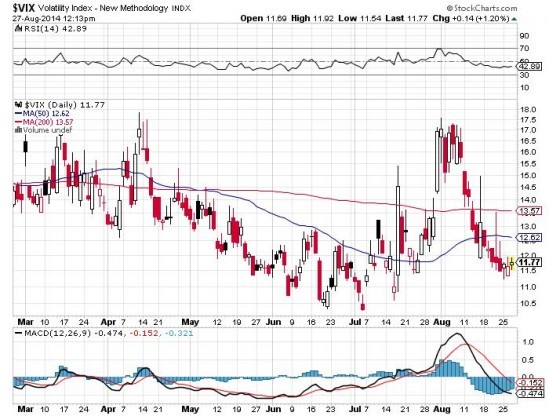
Fotis uses a top down approach.
He studies the global macro situation to lead him to currency pairs that are showing strength versus weakness and then hones in on them.
For example this week he sees Gbp weakness but doesn’t like the look (technically) of the Gbp/$ BUT he has shorted the Gbp/Cad instead which is currently 60 pips in profit.
A previous call he shared on here with us about the Euro/Nok prompted full time trader Brad, a member of our Pro Traders Course to say “Fotis, You certainly hit the nail right on the head with this one! Over 2000 pips since July and still falling awesome trading Top Down scenarios”
this trade is also making money every day in interest payments (swaps) from the broker & could do so for months as explained in detail BEFORE the event in the Euro/Nok post in the members area
Global Macro Analysis
This is a copy of the Investment Committee Meeting for this week:
One technical nightmare follows another.
Fotis finally managed to get the Greek internet people to get him back on line, THEN the recorded video wouldn’t upload!
Finally, to prevent you waiting any longer I have posted it on youtube. At least you can tell your friends that they get the chance to watch it.
We ARE going to have a mini relaunch of the Pro Traders course in the next few weeks for a limited number of people (Fotis has n’t much time to take more than a handful) THEN we will close the doors for the forseeable future and will not repeat it at the current price ever again. If you are interested then let me know ASAP CLICK HERE
Fed Chair Janet Yellen managed to appease doves interested in maintaining easy central bank policy, but gave slight encouragement to hawks who want to see an acknowledgment the Fed would raise rates sooner if necessary.
In what arguably was the most anticipated Fed speech of the summer, Yellen carefully constructed a picture of a still poorly functioning labor market that requires easy Fed policy. But she also said the economy is getting closer to the central bank’s objectives, and the Fed is “naturally shifting” to the debate on when to raise rates.
The dollar firmed after Yellen’s comments. Stocks initially rose, but were trading at lower levels in late morning trading as the market focused on Ukraine. The bond market reaction was most telling, with rates rising on the short end of the curve, and the two-year yield briefly touching 0.50 percent.
“This is her arguably taking a step to the middle,” said Ian Lyngen, senior Treasury strategist at CRT Capital. “We do see an increase in Fed funds futures rates, and that’s reflected in the two- and three-year sector in Treasurys, and it’s consistent with the notion that we’re continuing on the path of a rate increase in the middle of next year.”
As Yellen made a case for the Fed’s current easy policy, her comments on the potential for structural forces affecting the labor market got the most attention.
Even though she sees evidence it could be structural, she still sees enough of a cyclical element that policy will continue to have a positive influence on the labor market,” said Tom Simons, money market economist at Jefferies. “It’s dovish, but no more dovish than I expected. … There’s some concern about the talk that they might have to raise rates before inflation justifies, but I think when you take the whole thing together, it’s still pretty dovish.”
The Fed earlier in the week released the minutes of its July meeting that took a more hawkish tone. The minutes said members were surprised by the improvements in the labor market and they discussed an earlier rate hike.
The economy has added more than 200,000 jobs in each of the last six months, and the unemployment rate, at 6.2 percent, is close to the Fed’s projected rate of 6 to 6.1 percent by year-end. Economists expect the first Fed rate hikes in the middle of next year.
“She talks about how it’s difficult to measure if it’s cyclical or if there’s a meaningful structural component,” said Lyngen. “It’s not hawkish or dovish per se. It does represent a shift. She had not been as vocal about the structural aspect of the increase in slack in the labor market.”
Several of the more hawkish Fed officials have said the central bank should be discussing moving to normalization in rates now, but the dovish members don’t expect a rate hike until later next year and they note a lack of wage inflation as a sign of continued labor slack.
Yellen has made it clear the Fed needs to maintain easy policy to address the concerns of long-term unemployment and a low labor market participation rate.
In the 10 a.m. ET speech, Yellen discussed the lingering concerns of low labor market participation and the large number of still part-time workers. “Some portion of the rise in involuntary part-time work may reflect structural rather than cyclical factors. For example, the ongoing shift in employment away from goods production and toward services, a sector which historically has used a greater portion of part-time workers, may be boosting the share of part-time jobs,” Yellen said. She also mentioned a skills mismatch affecting hiring.
“It’s an academic speech that gives no new clues or revelation about how they’ll act, which tells me she’s not pushing back on the minutes where more people were acknowledging that things are moving faster they they thought. We’re back to where we were at 9:59,” said Peter Boockvar, chief market analyst at Lindsey Group.
Europe closes lower as Russia tensions weigh
Both central bankers gave the market what was expected, with Yellen reiterating that slack remains in the U.S. labor market even as the American economy continues a five-year recovery and Draghi expressing confidence that stimulus already announced and a weaker euro would help the euro-zone economy, but the ECB is ready to do more if needed
“I don’t think there was anything earth shattering out of her mouth, the labor market has gotten better,” said Doug Foreman, chief investment officer at Kayne Anderson Rudnick.
“If anything the euro zone and Draghi are looking at easing further and providing more liquidity to support the European economy. The weaker economic data out of euro zone in the second quarter is probably a function of a decline in confidence, which has to do with geopolitical risks there,” said Carin Pai, executive vice president and director of equity management at Fiduciary Trust.
Quantitative easing isn’t out of the question from the ECB, as there is “more evidence that Europe is having trouble, and the Ukraine situation is definitely having an impact on them,” Foreman added.
Stocks fell to session lows after NATO said it was observing an alarming increase in Russian forces near Ukraine and fluctuated after Yellen spoke, while churning mostly lower ahead of, and during, Draghi’s remarks.
Draghi has been very good at letting the market know that the ECB is ready to act, but the market will ultimately call his bluff if he doesn’t deliver,” Todd Lowenstein, who helps manage $16 billion at Highmark Capital Management in Los Angeles, said in a phone interview. “There’s a sense of impatience going on with the deterioration in the Eurozone, and there’s a growing desire to see an action plan.”
Past Suggestions + New Trading Ideas!
WATCH THE VIX FOR RISK OFF TRENDS!
Fotis Papatheofanous
www.fortresstradingacademy.com
Global Macro Analysis



0 Comments